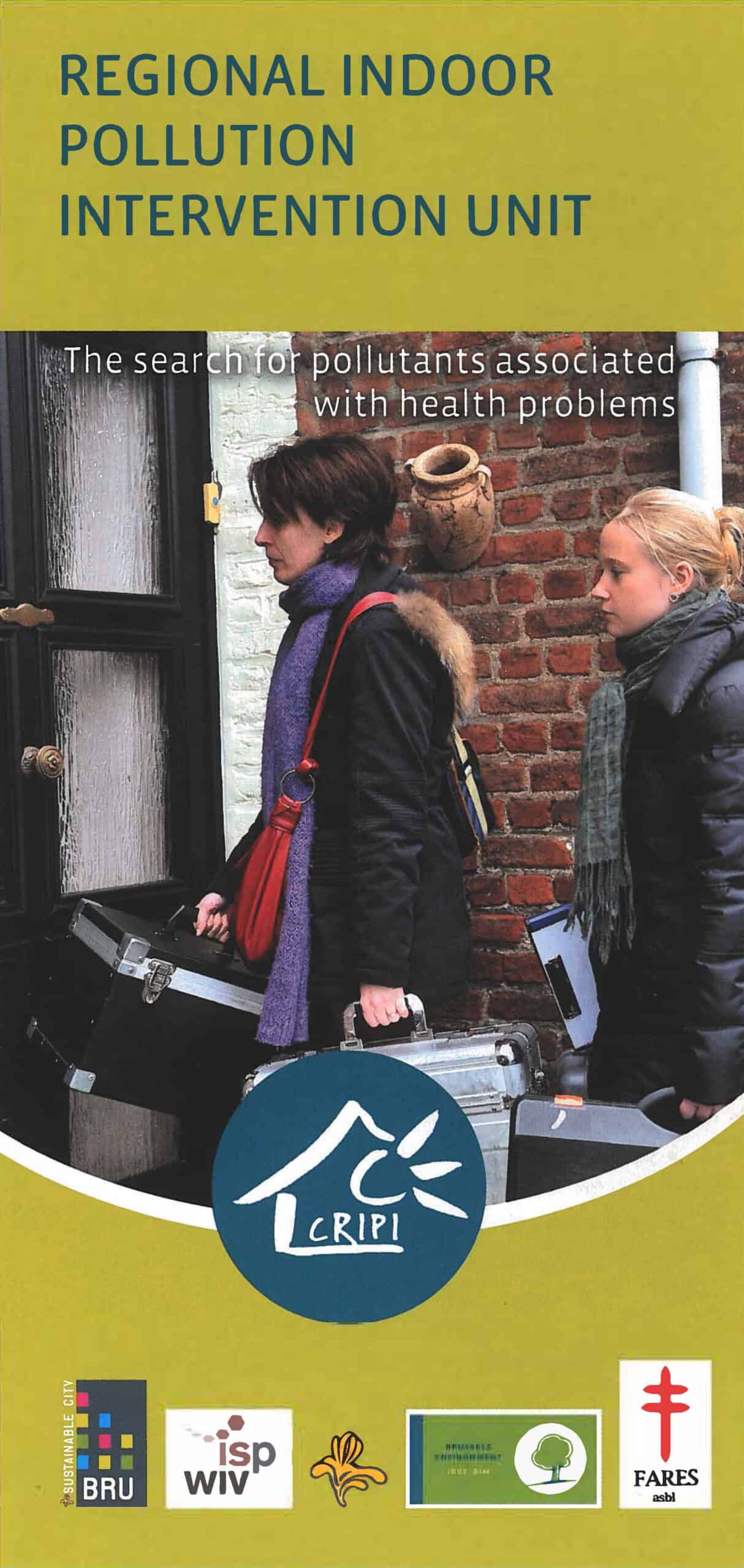We spend an average of 90% of our time indoors, and household air pollution can have a significant negative impact on our health. Indoor air is an important environmental component in determining a person's health, because it can include a wide range of chemical and biological pollutants. Social determinants such as income and working environments have a significant effect on the surroundings in which we live, and poor living environments can cause noncommunicable diseases and inflammatory illnesses. In addition, areas that are more disadvantaged risk having more pollutants.
The EuroHealthNet team spent an afternoon learning more about the vital, preventative work done by the Regional Interior Pollution Intervention Unit (CRIPI) team from Brussels Environment to combat the negative impacts of indoor pollution.
In a quiet suburban street, about 20 minutes outside of the centre of Brussels I am meeting with the CRIPI team - a specialised unit part of Brussels Environment that analyses chemical and biological samples taken from the home to identify problems with household air pollution.
“We will be right with you,” says Sandrine Bladt, Head of Brussels Environment's Health Department, who greets me along with her colleagues, Sylvie Vanderslagmolen and Céline Liebens, both of whom are Social Nurses for the metropolitan region of Brussels. The team welcomes me with a collection of large, undisclosed cases that would eventually turn out to contain a number of scientific instruments designed to measure the levels of indoor air pollution.
The Green Ambulance
The "Green Ambulance", is a free intervention that is available to residents living in the Brussels Metropolitan Region. It involves a group of specialists from Brussels Environment, the Scientific Institute of Public Health (Sciensano) and the Respiratory Diseases Fund (FARES). This group of experts collaborates to better identify and detect indoor pollutants in living and working environments that could be the source of ill health.
But how does it work?
- After a patient receives a thorough medical diagnosis from a doctor and their problem is still not resolved, the doctor may ask the CRIPI unit to investigate.
- This preventative measure of the patient's living environment allows the doctor to explore whether biological or chemical pollutants may cause the problems. A scientist and a medical professional from the team visit the patient at home and take chemical (lead, particle matter, volatile organic compounds from paint solvents for example) and biological (dust mites, mould) samples to assess the air quality.
- The microbiological samples are sent to the laboratory of Sciensano for analysis and the chemical samples are analysed in the laboratory of Brussels Environment.
- The results in the report clarify whether the environment is affecting the patient's health and help the doctor to provide specific care and advice.
- A district nurse phones the patient to provide further advice.
- CRIPI sends an assessment questionnaire to the doctor and patient 12 to 18 months later to see if the situation has been resolved.
Investigation
Entering a mid-60s building, the team explain who we will visit, “Today's client recently visited his doctor with complaints of respiratory problems," Sylvie explains, "and his 2-year old has developed a skin irritation.” Sadly, it appears that this type of complaint is not an unfamiliar story for the team, with 180 similar cases being dealt with by the team in Brussels last year.
The World Health Organization (WHO) estimates that household air pollution was responsible for an estimated 3.2 million deaths worldwide in 2020, including over 200,000 deaths of children under the age of 5. Babies and toddlers are typically more sensitive to indoor pollution and so to address this issue, the team conducts in depth investigations in early childhood day care facilities upon request.
Environmental diagnosis
The team wastes no time in unpacking the equipment. They deploy an efficient and precise operation, choosing the dining table as the temporary lab. The client completes a detailed questionnaire in one corner of the room, whilst equipment is set up in another corner to collect samples for analysis.
Indoor air pollution can aggravate a wide range of health issues. This includes ailments such as asthma, allergies, chronic bronchitis, migraines, digestive problems, and fatigue. When a patient presents with these symptoms, a doctor may suspect a domestic source as the underlying cause.
"By measuring the biological and chemical particles in the air, we can determine the quality of air in the home and whether there is harmful particles that can impact health", Sandrine explains.
The client, a man in his late-20s shows us around his home. He points to areas that have recently shown signs of dampness and mould, including in the room where his 2-year-old child sleeps. The client explains that, over the last year, he did not heat his house as much as he normally would have because of the rising costs of living and high energy prices.

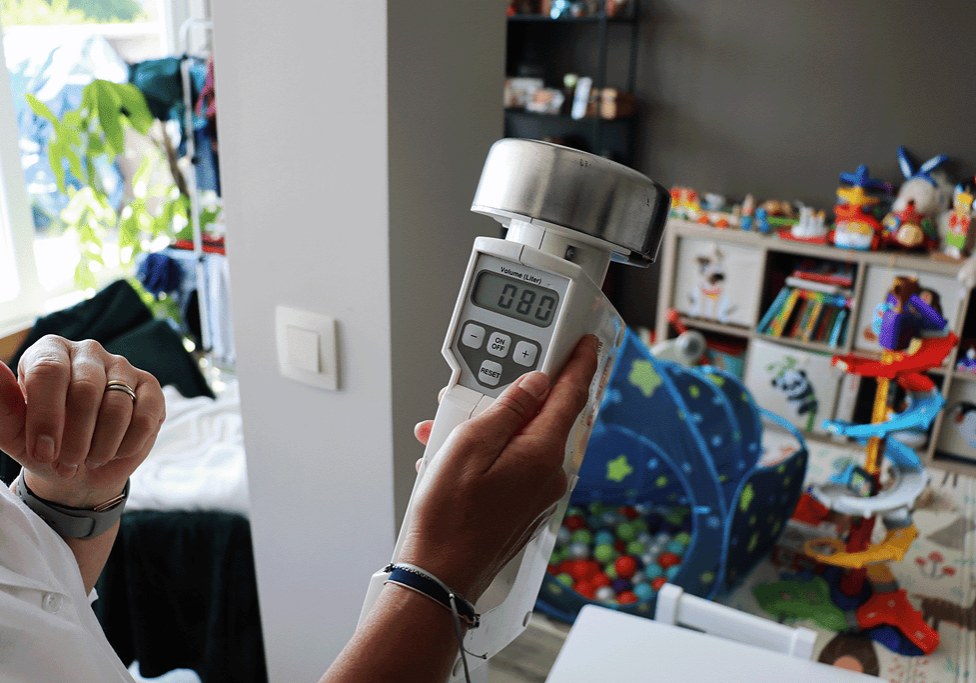
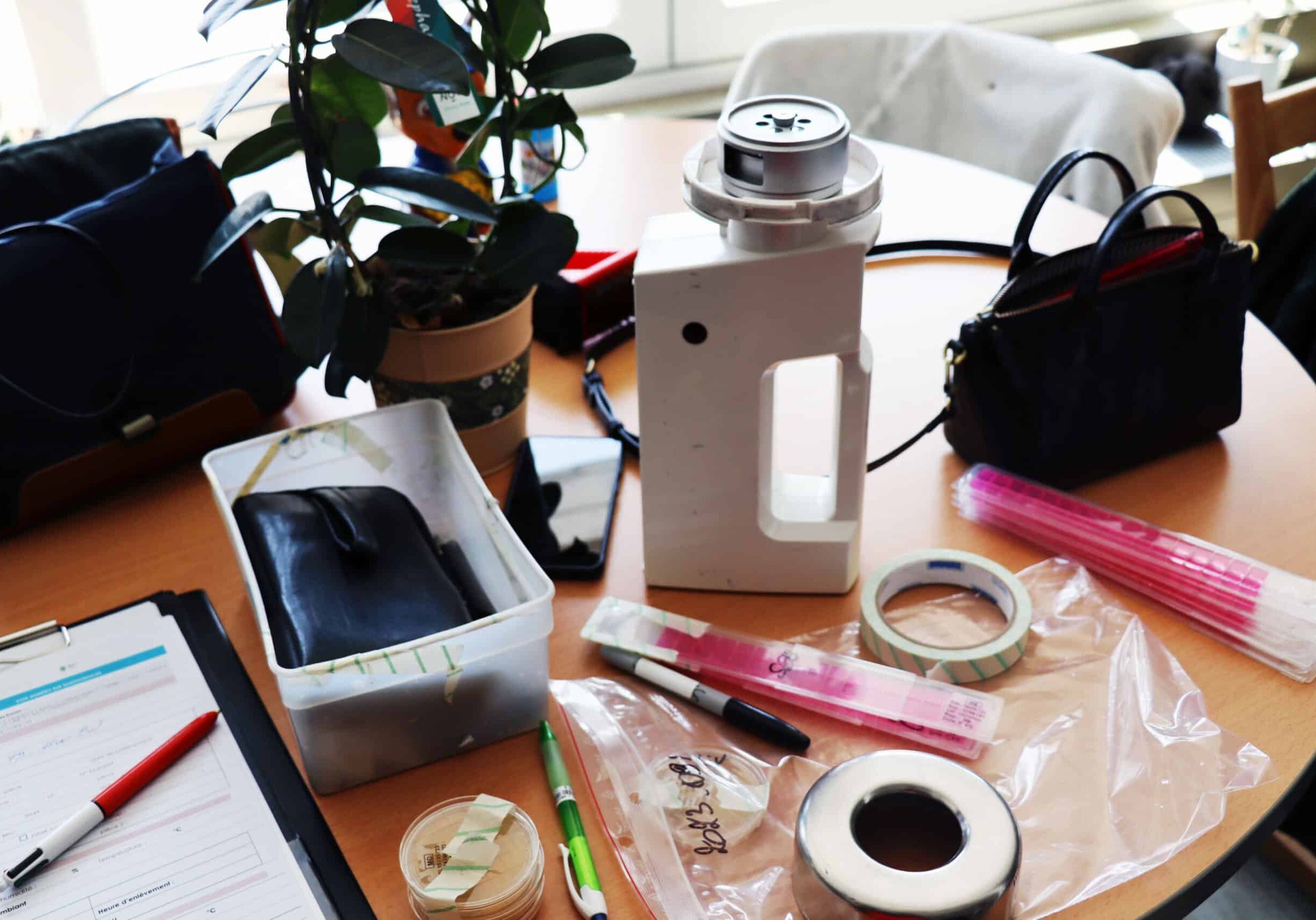
“I haven't had a problem with my apartment in the last 5 years. However, last year's spike in energy prices led me to decide not to turn on my heating, and as a result, my home is now showing signs of humidity”, the client explains - echoing similar experiences of many across Europe.
However, despite the fact that 93% of Europeans consider the rising cost of living to be their most urgent concern, it appears that the team is more concerned about the social determinant impacts on health rather than the rising costs of living, as Sylvie explains.
“The problem with social housing is that there is not enough, they are often too small for the size of the families living in them, and they were often built with low-quality materials, making for unhealthy living environments. While the cost-of-living crisis has affecting many already living in social housing and those in need of it, the problems with social housing are much older.”
Raising public awareness
The use of products in the home can also impact our health due to the heavy chemicals that they contain. The Green Ambulance works to raise public awareness on how to improve air quality through simple measures that can help prevent the development of noncommunicable diseases.
Sandrine continues, “Although it can be challenging to reduce air pollution where someone lives, we can offer advice. It is crucial that we raise awareness of the negative effects of indoor air pollution", Sandrine states. “As indoor air quality can influence health, it is important to help our clients identify the different sources of pollutants. We provide advice such as ventilating the home for 15 minutes every morning and evening, to not smoke indoors, and avoid using air fresheners and pesticides”, she continues.
Nevertheless, despite the team's efforts, there is still a lot that decisionmakers need to do to ensure that air pollutants remain at a healthy level. This includes developing targeted educational materials, preventative measures, and implementing initiatives that respect the social context of this field.

Respecting all values and traditions
Increasing public awareness of this complicated issue is by no means an easy task. As Sylvie explains, there are many causes of indoor air pollution, and they frequently go beyond just the presence of biological matters in the home.
“Educating people about the negative effects of indoor pollution on their health is crucial. We provide advice on how to prevent high levels of pollutants in the home as well as the reasons why doing so is crucial for avoiding illnesses. However, as every home is unique, it is extremely challenging to do so."
"For instance, there are many different cultures and traditions to respect and value in Brussels. It is essential that we understand the needs of the various communities as we enter the homes. Having the ability to provide information can be helpful because many members of these underserved communities already experience significant health system barriers."
"Additionally, some members from particular communities can feel hurt by the issues caused by household pollution because of a cultural obligation and pride in their environment - often affecting the women of these communities. Therefore, we must be considerate and aware of different needs. By demonstrating to people through science that air pollution is a structural issue rather than a personal one, we can alleviate fears."
There are undeniable benefits to engaging communities in promoting health and wellbeing. The Green Ambulance is a perfect example of how a bottom up and top down approach can enable changes in behaviour, environments, policies, programmes and practices from within communities. Of course, this approach requires developing relationships with the community. To do this it is integral that sensitivity towards cultural needs are considered to build trust and breakdown barriers.
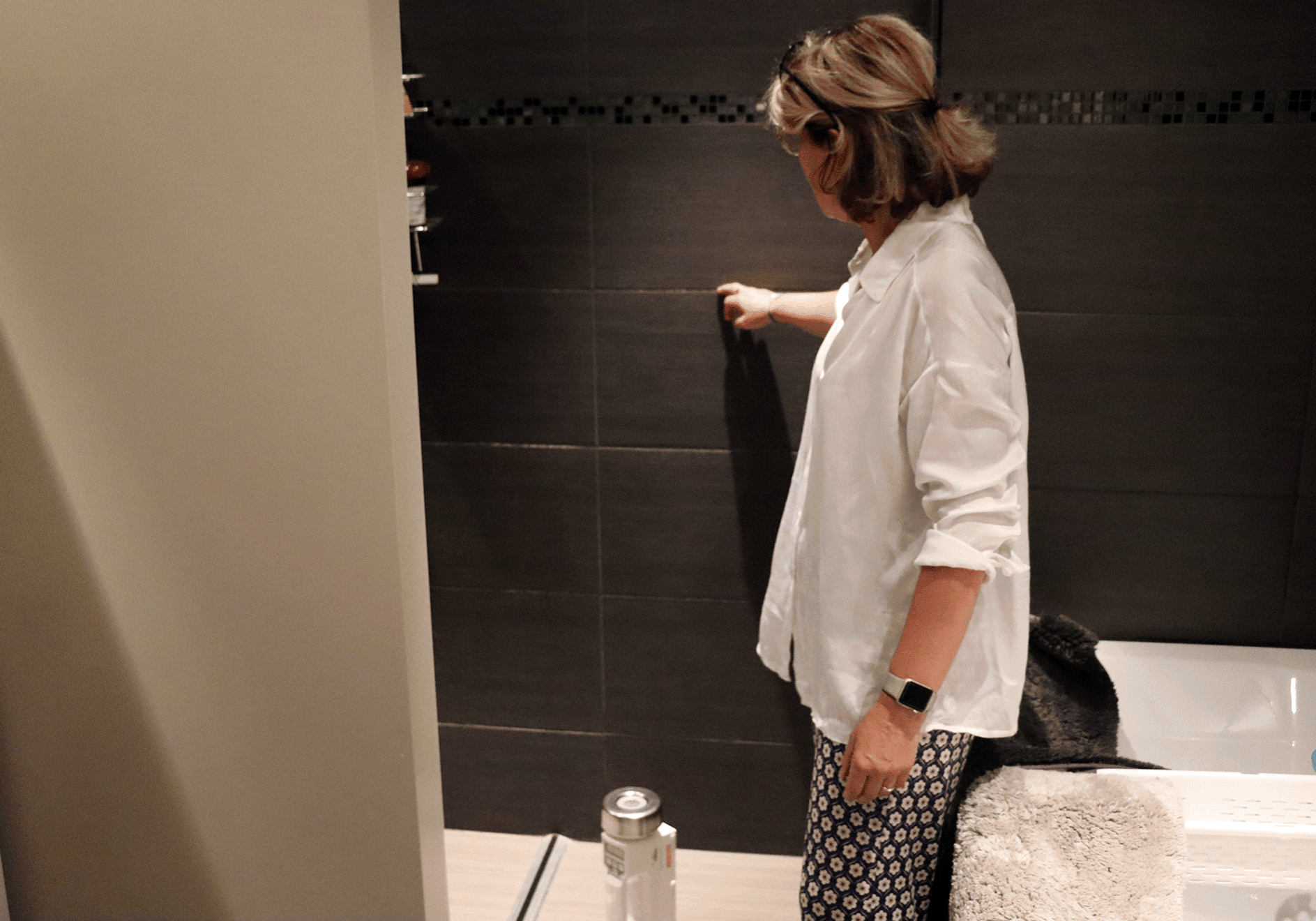
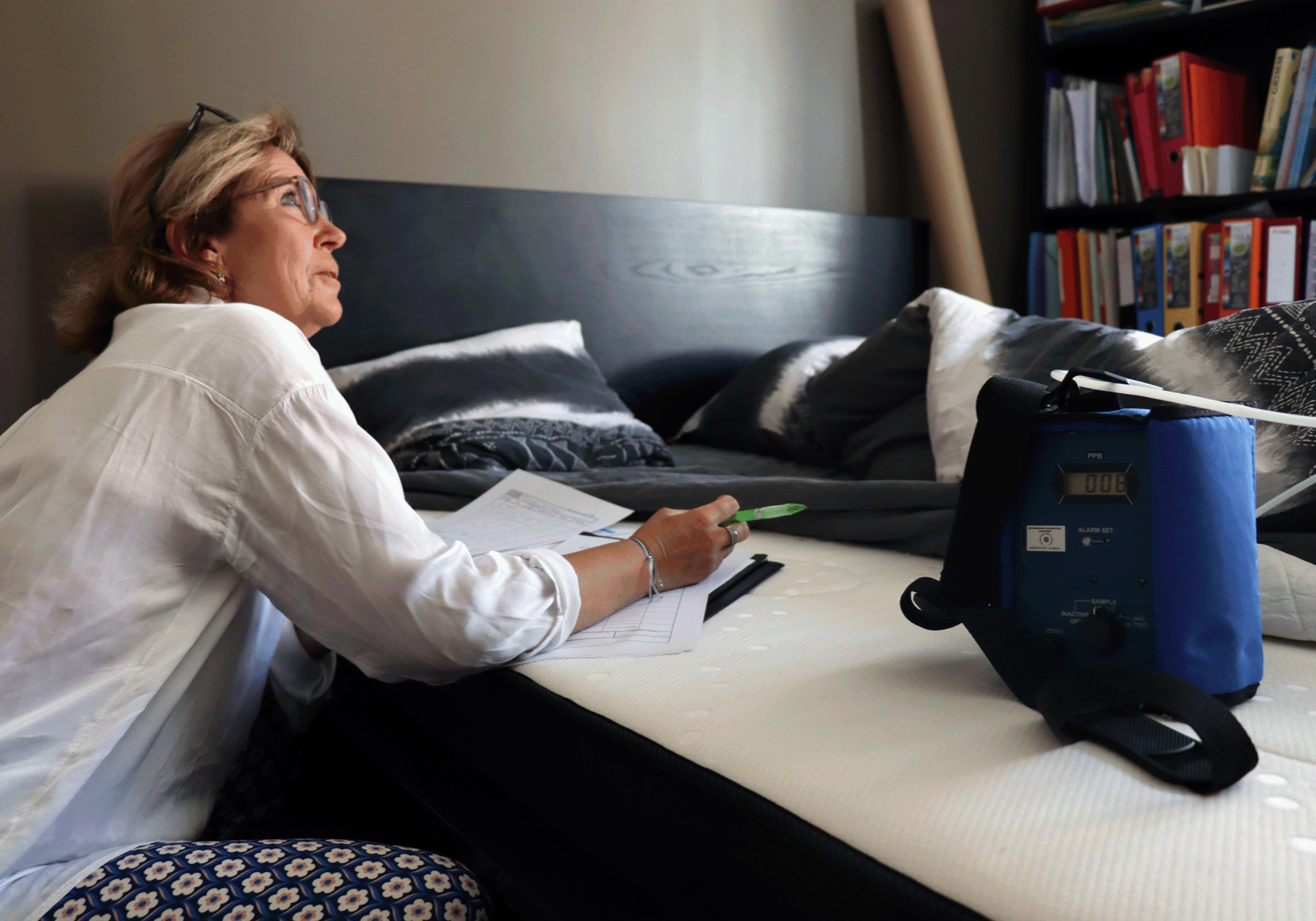

Cross-collaboration
The Green Ambulance is a leading example of how multi-sectoral approaches in health systems can benefit individuals and advance wellbeing. Such interventions can aid in better identifying the problems associated with housing and poverty by providing a more comprehensive picture of how a person's living conditions can be detrimental to their health.
It is important for the healthcare sector to expand and work with other sectors so that evidence-informed actions can be made to optimise health and wellbeing for all, particular those most vulnerable in our societies.
“Health care professionals can help. Understanding whether harmful pollutants are contributing to health conditions by simply considering the place in which people live, and the environments people are exposed to on a daily basis can help to provide an accurate and successful diagnosis. However, this must be done a case-by-case basis" Sylvie adds.
Implementing changes
The WHO sets clear guidelines for indoor air pollution. Health professional can use these recommendations to protect the public from the health risks associated with environmental exposure and to help increase awareness of the various chemical and biological particles that are frequently found in indoor air.
But there are still challenges. 55% of the world's population already resides in urban areas, and by 2050, that number is expected to rise to 68%. Considering local and national decisionmakers as crucial stakeholders will help to enable communities to enjoy better health outcomes and promote wellbeing in both indoor and outdoor environments. Whole-of-government approaches will help to do this as complex problems such as maintaining healthy indoor environments require collaborative efforts from various actors. These approaches must incorporate climate into health policies to contribute to the development of a society that is climate resilient.
Public spaces
Despite these challenges, indoor pollution in Brussels' public spaces has improved. The COVID-19 pandemic exposed the inequalities in our societies. It changed the focus from health to implementing interventions that can support those who are most at risk and give everyone a seat at the table.
“Since COVID-19, ventilation policies have increased and progress has been made in this area. It is now a requirement that all public spaces ventilate and measure CO2 levels frequently. This is integral to our work as it will increase the public's sensitivity to indoor air pollution and raise awareness of its effects. This, in turn enables public spaces to have good air quality which will of course prevent illness,” Sandrine concludes.
Making the change
To overlook the effects of indoor air pollution can be catastrophic for the promotion of health and wellbeing. Innovative interventions can empower individuals as they can support and advocate for the rights of everyone, especially those most vulnerable. Additionally, they can strengthen multi-sectoral approaches and support the creation for fair and just policies by presenting the effects to policymakers and decisionmakers.

Ruth Thomas
Ruth joined the EuroHealthNet team in April 2022 as Communications Officer.
She holds a BA Hons degree in Print Journalism from the University of Gloucestershire (UK) and has worked in the not-for-profit sector for over ten years. Ruth has applied her communication skills to a number of positions including for an energy trade association in Brussels and as part of a National Research Network (Sêr Cymru / Stars Wales), where she was based at a UK university.

